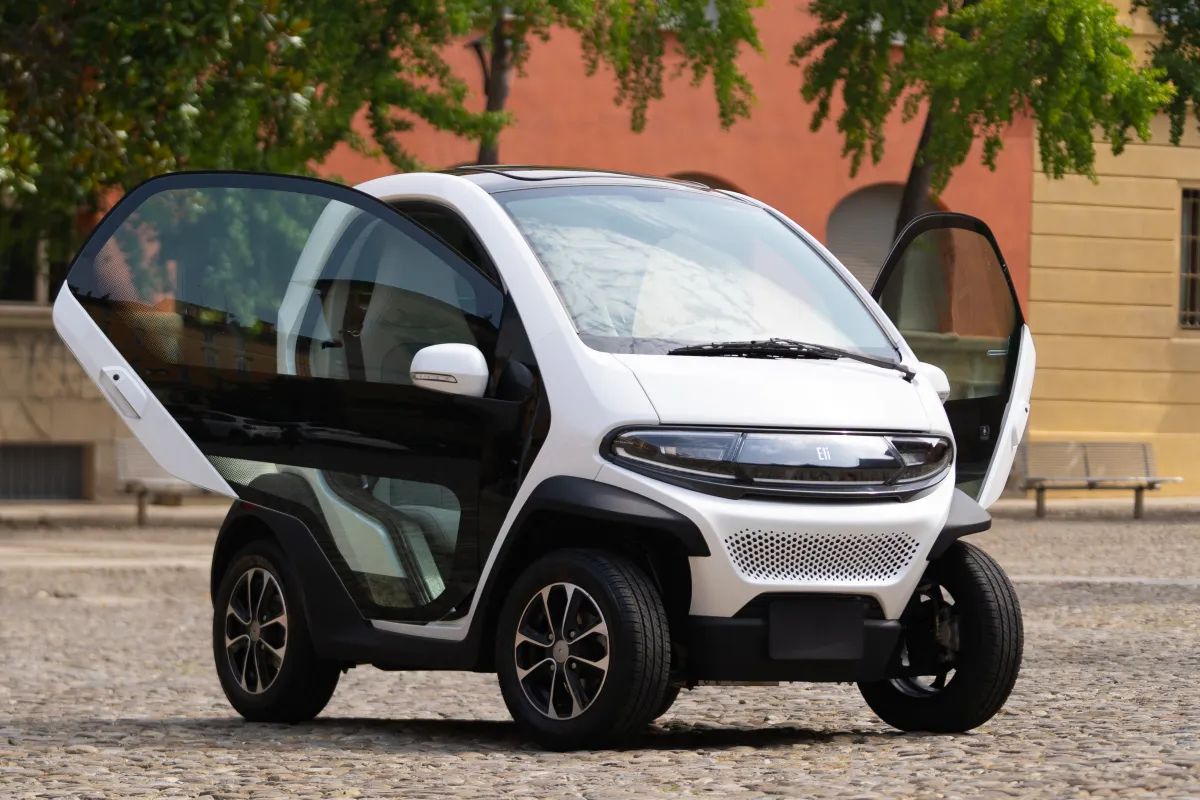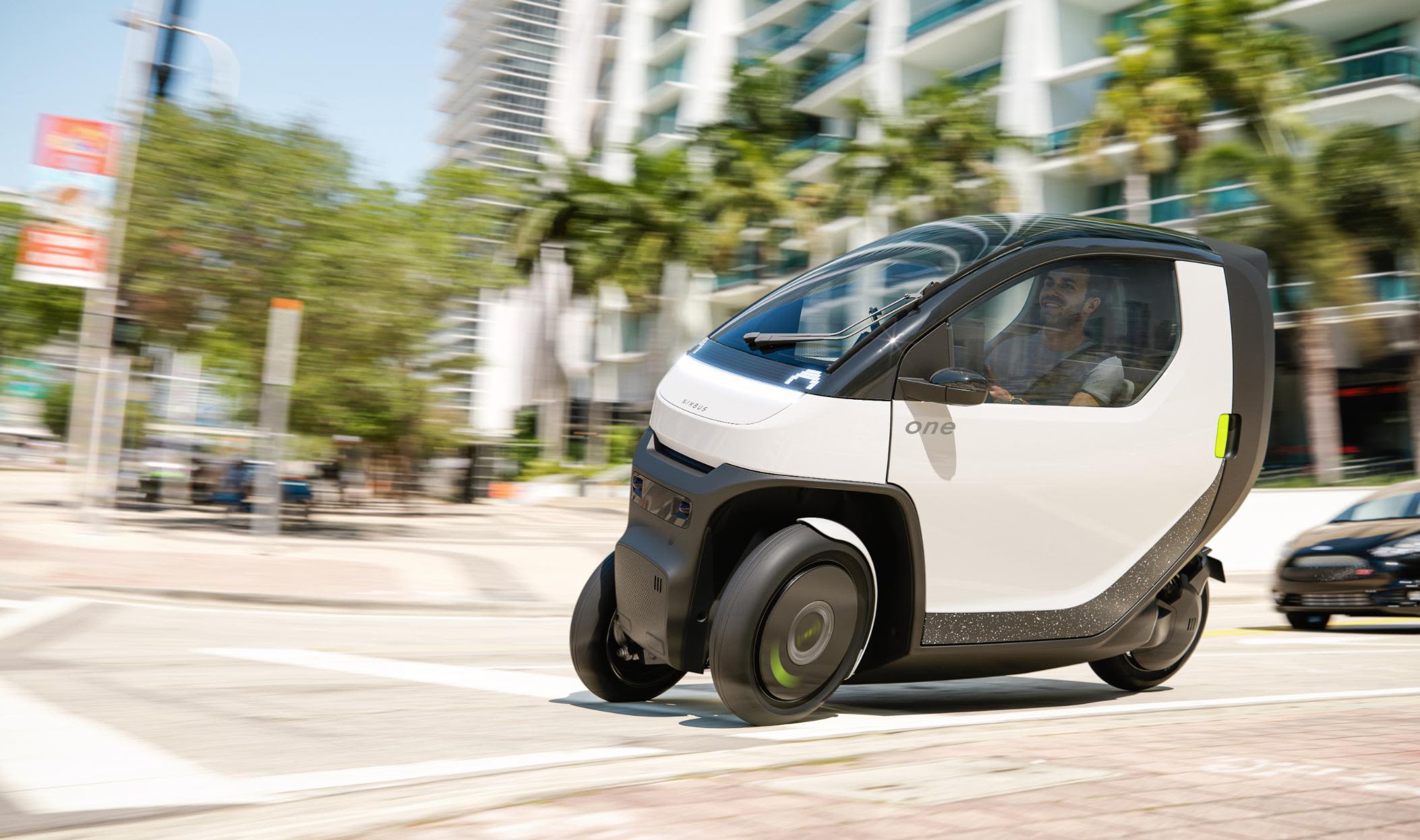Many cities around the world are grappling with an increasing congestion crisis. The problem of traffic jams is compounded by pollution, particularly emissions from conventional automobiles. In response, local governments and authorities have begun implementing measures to curb these issues, including restricting the use of traditional cars in urban centers.
This has led to a significant shift toward alternative forms of transport that are smaller, more sustainable, and less polluting. Among these solutions, microcars have emerged as a promising contender for addressing urban mobility challenges, offering a compact, eco-friendly alternative to traditional vehicles.
Microcars: A Resurgence Driven by Necessity
Microcars are not a new concept. They first gained attention in the 1960s with models like the petrol-powered Peel P50. However, their popularity waned as larger cars became the norm. Today, rising concerns over traffic congestion and environmental sustainability have sparked a resurgence of interest in microcars.
Unlike their earlier counterparts, modern microcars are often powered by electric motors, leveraging advancements in battery technology to offer a greener, cleaner mode of transport. These vehicles are uniquely positioned to tackle the challenges of urban life, providing a balance of convenience, affordability, and reduced environmental impact.

Pioneering the Microcar Movement
Several companies have led the way in redefining microcars for the modern era. Renault was an early innovator with its Twizy, a quirky, lightweight electric vehicle that became a top-seller in Europe. Although the Twizy is no longer in production, it set the stage for other manufacturers to enter the market.
Citroën, for example, introduced the Ami, an inexpensive and accessible electric microcar that continues to gain traction. Industry experts like Merlin Ouboter, co-founder of the Microlino, stress the need for a paradigm shift in mobility, advocating for smaller, more sustainable vehicles to combat the growing size and weight of modern automobiles.
Microlino: A Blend of Retro Charm and Modern Efficiency
The Microlino stands out in the microcar market for its blend of nostalgic design and contemporary technology. Inspired by the iconic 1950s Isetta Bubble Car, the Microlino features a retro aesthetic, including a front-opening “fridge door” and compact three-wheeled layout in its Lite version. Despite its small size, the Microlino offers practical performance, with a range of up to 62 miles on a single charge for the base model.

A larger battery option extends the range to 114 miles, catering to commuters who need more flexibility. With a top speed of 55mph and a price starting at €21,990, the Microlino appeals to urban dwellers seeking style and practicality. Its leasing options, available in Switzerland, make it even more accessible.
Silence S04 Nanocar: Practicality Meets Innovation
Spanish company Silence has introduced the S04 Nanocar, a microcar designed with urban practicality in mind. With a top speed of 52mph and a range of 92 miles per charge, the S04 combines performance and functionality. Its standout feature is a swappable battery system, which allows users to remove the vehicle’s batteries and recharge them at home, at public charging stations, or at Silence’s battery swap centers.

This innovative approach makes the S04 particularly convenient for city dwellers. The vehicle also offers modern conveniences like smartphone integration and USB chargers. Priced at £15,995, the S04 Nanocar provides a versatile and affordable option for urban transportation.
Eli Zero: A Neighborhood Solution
The Eli Zero is a microcar designed for short, neighborhood commutes. Its compact size and 60-mile range make it ideal for quick trips around town, while its 25mph top speed limits its use on low-speed roads. Despite its modest specifications, the Eli Zero includes features typically found in larger cars, such as air conditioning, power steering, and a rear-view camera.

Optional upgrades include Apple CarPlay and Android Auto compatibility. While its “Neighborhood Electric Vehicle” (NEV) classification restricts its use on faster roads, the Eli Zero has found a niche in both Europe and the US. Priced at $11,900, it represents an affordable and practical alternative to traditional cars.
Birò: Customizable and Flexible Mobility
Italian manufacturer Birò takes a customizable approach to microcars, offering a range of configurations to suit different needs. From single-passenger “Naked” models to two-seat “Big” variants, Birò caters to a variety of urban transportation requirements. The vehicles also feature swappable battery technology, allowing for quick and convenient recharging.

With top speeds ranging from 28 to 40mph and prices starting at £11,350, Birò provides an affordable entry point to electric mobility. The company also offers a membership program in Italy, enabling users to access a vehicle as needed rather than owning one outright. This flexible approach makes Birò an attractive option for those seeking a sustainable and versatile transportation solution.
The Future of Urban Mobility: Microcars Leading the Way
Microcars like the Microlino, Silence S04, Eli Zero, and Birò are ushering in a new era of urban mobility. By tackling the issues of congestion, limited parking, and pollution, these compact vehicles present a practical and sustainable alternative to traditional automobiles. Their small size and electric power make them particularly well-suited for maneuvering through crowded city streets while minimizing environmental impact.
As more cities enforce restrictions on larger vehicles and promote eco-friendly transportation solutions, microcars are poised to play a crucial role in redefining urban transportation. Their growing popularity across Europe and their emerging presence in the US underscore their potential to transform how we approach mobility in cities.

